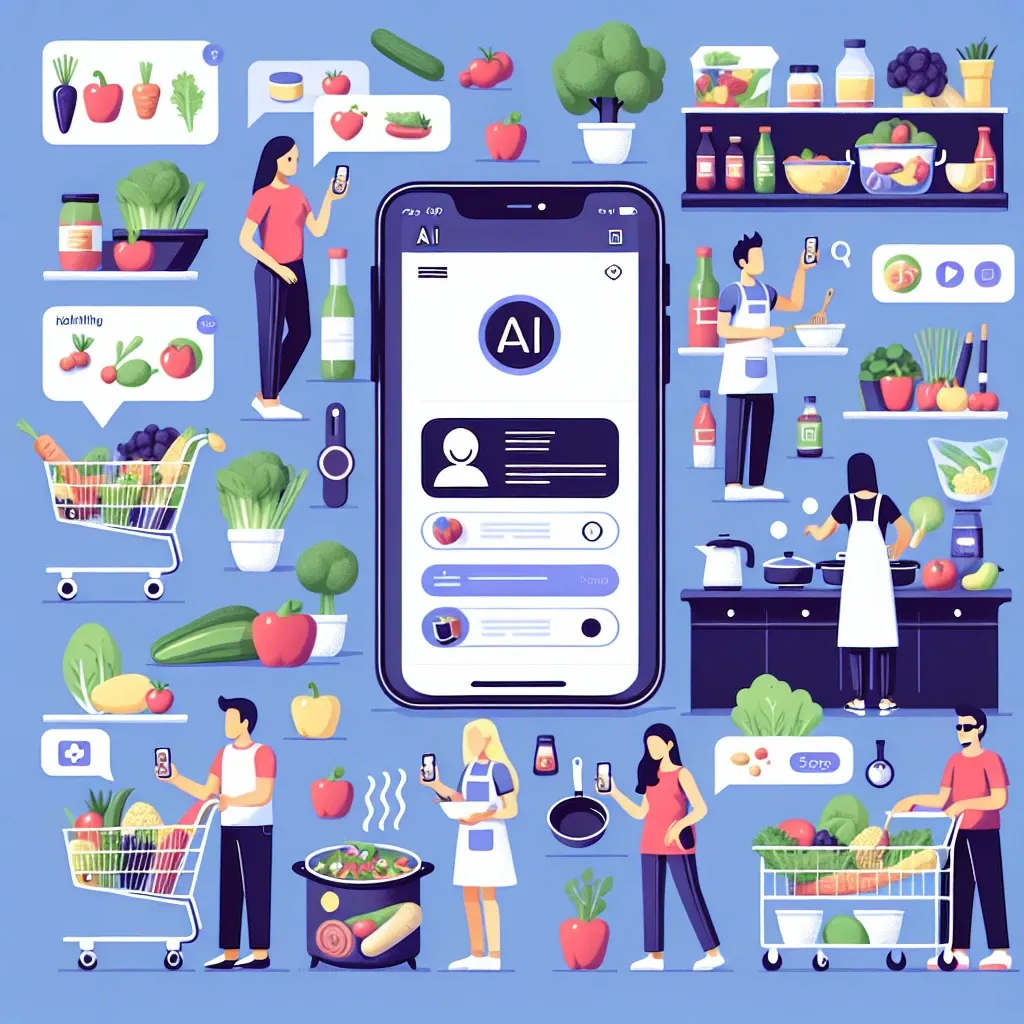
Introduction
In a world where technology increasingly intersects with everyday tasks, Amazon is taking a bold step forward by testing AI-powered recipe recommendations in its grocery app. This innovative feature promises to transform how users plan their meals, shop for groceries, and even discover new culinary delights. As the trend toward personalized shopping experiences continues to rise, Amazon’s move could set a new standard in the grocery app market.
The Rise of AI in Everyday Life
Artificial Intelligence (AI) has rapidly integrated into various facets of our lives, from virtual assistants that help manage our schedules to algorithms that suggest what we might enjoy watching next. The grocery industry is no exception. AI’s ability to analyze vast amounts of data allows retailers to offer tailored experiences that were previously unimaginable. As consumer preferences evolve, companies like Amazon are leveraging AI to meet the demand for more personalized services.
What Are AI-Powered Recipe Recommendations?
AI-powered recipe recommendations utilize machine learning algorithms to suggest recipes based on a user’s preferences, dietary restrictions, and even the ingredients they have on hand. Imagine pulling up your grocery app and receiving suggestions for delicious meals that can be prepared with what you already have in your pantry. This innovation not only simplifies meal planning but also reduces food waste, as users are encouraged to use existing ingredients before purchasing new ones.
How Amazon Plans to Implement This Feature
Amazon’s grocery app is currently in the testing phase for this new feature. The company aims to gather user data on preferences and behaviors to refine the algorithm. Here’s a look at how Amazon plans to implement these AI-powered recipe recommendations:
- User Profiles: Users can create profiles that include dietary preferences, favorite cuisines, and any specific allergies.
- Ingredient Recognition: The app will incorporate a feature that allows users to scan barcodes or enter ingredients, which the AI will then analyze to suggest recipes.
- Seasonal Suggestions: The AI will also consider seasonal ingredients to recommend recipes that make the most of what’s fresh and available.
- Integration with Shopping Lists: Suggested recipes will be linked directly to the shopping list feature, making it easy to add ingredients for recipes users want to try.
Impact on Meal Preparation and Grocery Shopping
The introduction of AI-powered recipe recommendations is poised to make a significant impact on how users approach meal preparation and grocery shopping. By providing customized suggestions, users can save time and effort when deciding what to cook. Moreover, this feature can enhance the overall shopping experience by streamlining the process of creating shopping lists based on selected recipes.
Challenges and Considerations
While the benefits of AI-powered recipe recommendations are numerous, there are also challenges to consider. Privacy concerns regarding data collection and usage are paramount. Users will need to trust that their personal data is handled securely and ethically. Additionally, the accuracy of AI predictions is crucial; if the recommendations do not align with user preferences, it could lead to frustration rather than convenience.
Data and Privacy Issues
As with any app that collects user data, Amazon must navigate the complexities of data privacy laws. Transparency in how user data is stored and utilized will be essential for building trust. Users should be informed about what data is collected and how it enhances their experience. Amazon has a responsibility to ensure that its systems comply with relevant regulations and prioritize user privacy.
Future Predictions: The Evolution of Grocery Apps
As AI technology continues to advance, the future of grocery apps looks promising. We can expect to see more features that enhance user experience, such as:
- Voice Recognition: Imagine verbally asking your app for dinner ideas and receiving tailored suggestions in real-time.
- Meal Kits Integration: Grocery apps may partner with meal kit delivery services to offer users pre-packaged ingredients for suggested recipes.
- Nutritional Analysis: Advanced AI could provide nutritional information for suggested recipes, helping users make healthier choices.
Real-World Examples of AI in Grocery
Amazon is not the only company exploring the use of AI in grocery shopping. Many retailers are beginning to embrace technology to better serve their customers. For instance, some grocery chains are utilizing AI to predict which products will be in demand based on historical sales data. This allows for better inventory management and reduces food waste. As these technologies evolve, we can expect a dramatic shift in how grocery shopping is conducted.
Cultural Relevance of Recipe Recommendations
Food is a central aspect of culture, and the way we prepare meals reflects our traditions and values. AI-powered recipe recommendations can bridge cultural gaps by introducing users to cuisines they may not have tried otherwise. By promoting diversity in food choices, Amazon’s grocery app could play a role in enriching culinary experiences and fostering a greater appreciation for global flavors.
Expert Insights on the Future of Grocery Tech
Industry experts predict that grocery apps like Amazon’s will play a pivotal role in shaping the future of food shopping. According to a recent study, over 70% of consumers express interest in using technology to enhance their grocery shopping experience. As competition in the grocery sector intensifies, companies that adopt innovative technologies will likely gain a competitive edge.
Conclusion
Amazon’s testing of AI-powered recipe recommendations in its grocery app marks a significant step toward revolutionizing the grocery shopping experience. By harnessing the power of AI, Amazon aims to provide personalized meal suggestions that cater to individual preferences and dietary needs. As the technology continues to evolve, consumers can look forward to a future where grocery shopping is more efficient, enjoyable, and sustainable. Ultimately, this innovation reflects a broader trend of how technology is reshaping our relationship with food and cooking.
